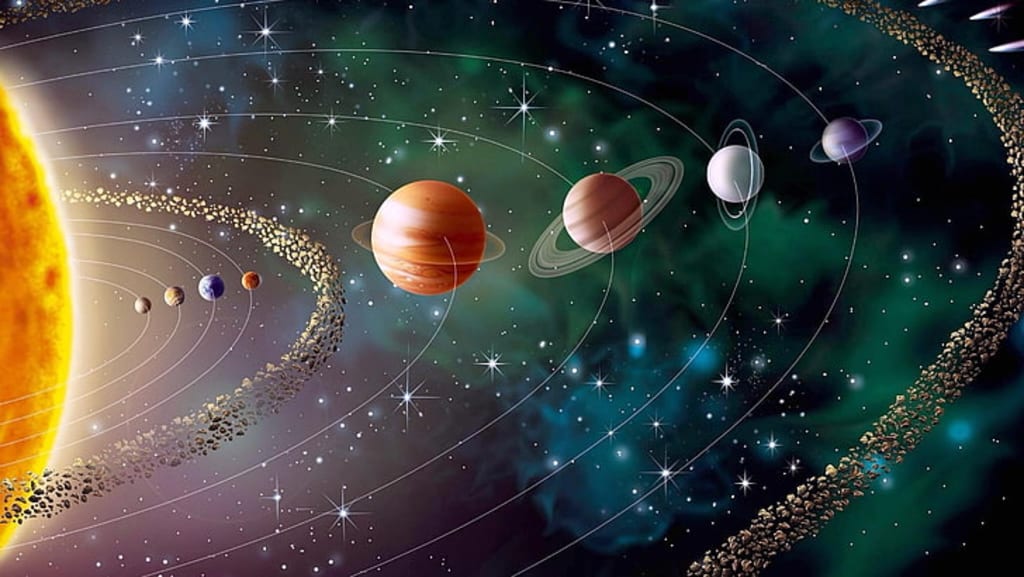Exploring the Wonders of Space Science: A Journey Beyond the Stars
The Cosmic Quest: What Is Space Science?
At its core, space science is the study of everything beyond Earth’s atmosphere. It encompasses various disciplines like astrophysics, planetary science, cosmology, astronomy, and heliophysics. Each of these fields has a specific focus but shares a common goa
l: to understand the universe and our place in it.
For centuries, humans have looked up to the stars, wondering what lies beyond our home planet. With the advent of technology and space exploration, we’ve managed to develop instruments and spacecraft that allow us to peer deeper into the cosmos than ever before. Today, our understanding of the universe has expanded, but the mysteries of space are still vast, waiting to be unraveled.
The Role of Space Exploration
Space exploration, both human and robotic, has been a cornerstone of space science. Manned missions like the Apollo landings in the 1960s and 1970s helped us take the first giant leap toward understanding the moon and the larger solar system. Robotic missions, such as those sent to Mars, Venus, and the outer planets, have provided valuable information without the need for human presence.
Space telescopes like Hubble and James Webb have revolutionized our ability to observe distant galaxies and stars, offering breathtaking images of the universe. These instruments allow us to see light emitted millions or even billions of years ago, giving scientists a glimpse into the distant past of the cosmos.
The Building Blocks of the Universe
The universe is made up of countless wonders, from swirling nebulae and black holes to distant exoplanets. Some of the most intriguing aspects of space science include:
-
Stars and Stellar Evolution
Stars are born, live, and die, and this cycle is one of the most fascinating phenomena in space science. Stars like our Sun begin as clouds of gas and dust, gradually collapsing under their own gravity. They then ignite nuclear fusion in their cores, producing light and heat. Over millions or even billions of years, stars evolve, sometimes exploding as supernovae or collapsing into black holes. -
Exoplanets and the Search for Life
One of the most exciting recent advancements in space science is the discovery of exoplanets—planets that orbit stars outside our solar system. Scientists have found thousands of these planets, some of which lie in the “habitable zone” of their parent star, where liquid water might exist. This raises the tantalizing possibility that life may exist elsewhere in the universe. The search for extraterrestrial life is one of the driving forces behind space exploration. -
Black Holes and Dark Matter
Black holes are regions in space where gravity is so strong that not even light can escape. Understanding these enigmatic objects helps us explore the extremes of space-time and the nature of gravity. But black holes are only one part of the puzzle. Dark matter, a mysterious substance that doesn’t emit light, makes up most of the universe’s mass, yet it remains largely undetectable. Discovering the true nature of dark matter could rewrite our understanding of the universe. -
The Big Bang and Cosmic Evolution
The Big Bang theory is the leading explanation for the origin of the universe. It suggests that the universe began as a singularity—an infinitely small point—about 13.8 billion years ago and has been expanding ever since. Space science continues to explore the early moments of the universe and how galaxies, stars, and planets formed over billions of years. The study of cosmic background radiation gives us clues about the conditions that existed right after the Big Bang.
The Technology Driving Space Science
The advances in space science would not be possible without cutting-edge technology. Space telescopes, satellites, and rovers all rely on highly specialized equipment. Some key technologies that enable space science include:
-
Telescopes: Instruments like the Hubble Space Telescope and the newly launched James Webb Space Telescope allow astronomers to look far beyond our own solar system to explore distant galaxies and other cosmic phenomena.
-
Rovers and Landers: Robotic explorers like NASA's Curiosity Rover and Perseverance have landed on Mars, providing us with insights into the Martian landscape and potential signs of past life.
-
Space Probes: Probes like Voyager and Parker Solar Probe travel through space to study planets, moons, and even the Sun, sending back invaluable data about the solar system’s dynamics and beyond.
-
Artificial Intelligence and Machine Learning: AI is being used to analyze vast amounts of data collected from telescopes and spacecraft. It can help identify patterns, locate exoplanets, and even simulate cosmic events.
The Future of Space Science
The future of space science is brimming with possibilities. As technology improves, we will have more powerful telescopes, faster spacecraft, and more sophisticated instruments to explore the universe. In the coming decades, humanity might even send astronauts to Mars, study asteroids for resources, or unlock more secrets about dark energy and the universe’s expansion.
Collaborations between space agencies, private companies, and international organizations will continue to drive innovation. NASA, ESA, SpaceX, and other organizations are already working on missions to explore asteroids, the Moon, Mars, and beyond.
Conclusion: The Endless Wonders of Space
Space science is more than just a field of study—it’s an adventure that beckons humanity to look beyond the horizon of Earth. It challenges us to explore, understand, and contemplate the infinite. With every discovery, we’re reminded that we are but a tiny part of a vast and magnificent universe. Whether we’re sending robots to Mars, gazing at distant stars, or searching for signs of life beyond our world, space science fuels our curiosity and keeps us wondering, "What’s out there?"
As we continue our journey into the cosmos, one thing is certain: the best of space science is yet to come.





0 comments:
Post a Comment